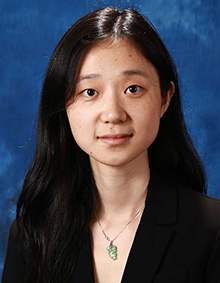17758013020 Chen Chen
-
-
-
17816169069 Jinglin Jian
-
17758013020 Chen Chen
17816169069 Jinglin Jian

Prof. Ni Zhao received her Ph.D. degree in Physics from University of Cambridge in 2008. From 2008-2010 she worked as a postdoctoral research associate at Massachusetts Institute of Technology. She joined the Department of Electronic Engineering at CUHK in 2010 and is now a Full Professor. Her recent work focuses on development of low-cost energy harvesting devices, nanostructured optoelectronic devices and sensors for biomedical applications. Her research to date has generated over 170 journal publications, with an h-index of 68. Prof. Zhao was listed as Highly Cited Researchers 2018 by Clarivate Analytics and is a Fellow of Royal Society of Chemistry and a member of The Hong Kong Young Academy of Sciences. She currently serves as the Associate Editor of Science Advance and Journal of Materials Chemistry C.
New Generation Optoelectronic Devices for Medical Applications
Yuanzhe Li, Xie He, Shirong Qiu, Ni Zhao
Department of Electronic Engineering, The Chinese University of Hong Kong (nzhao@ee.cuhk.edu.hk)
Abstract
The increasing global demand on personalized healthcare technologies calls for a new generation of wearable sensors that are high-performance, low-cost, and compatible with arbitrary platforms including human organs. Low-temperature processed hybrid and nanostructured materials are an enabler of such devices because they can be directly patterned to various 2D and 3D substrates through low-cost printing processes and their electronic and mechanical properties can be easily tuned through composition or morphology tuning. In this talk, I will describe how this class of materials enables novel wearable medical devices with unprecedented performances. In particular, I will focus on the design of flexible optical devices for noninvasive physiological measurements. Firstly, I will introduce the development of high-sensitivity optical probes for continuous tracking of heart rate variability, arterial blood pressure and cerebral oxygenation. Secondly, I will talk about the design of single-point spectrometer for hyperspectral imaging. Finally, I will introduce a new physiological model that can be universally applied to wearable sensors to enable dynamic tracking of arterial stiffness and blood pressure.